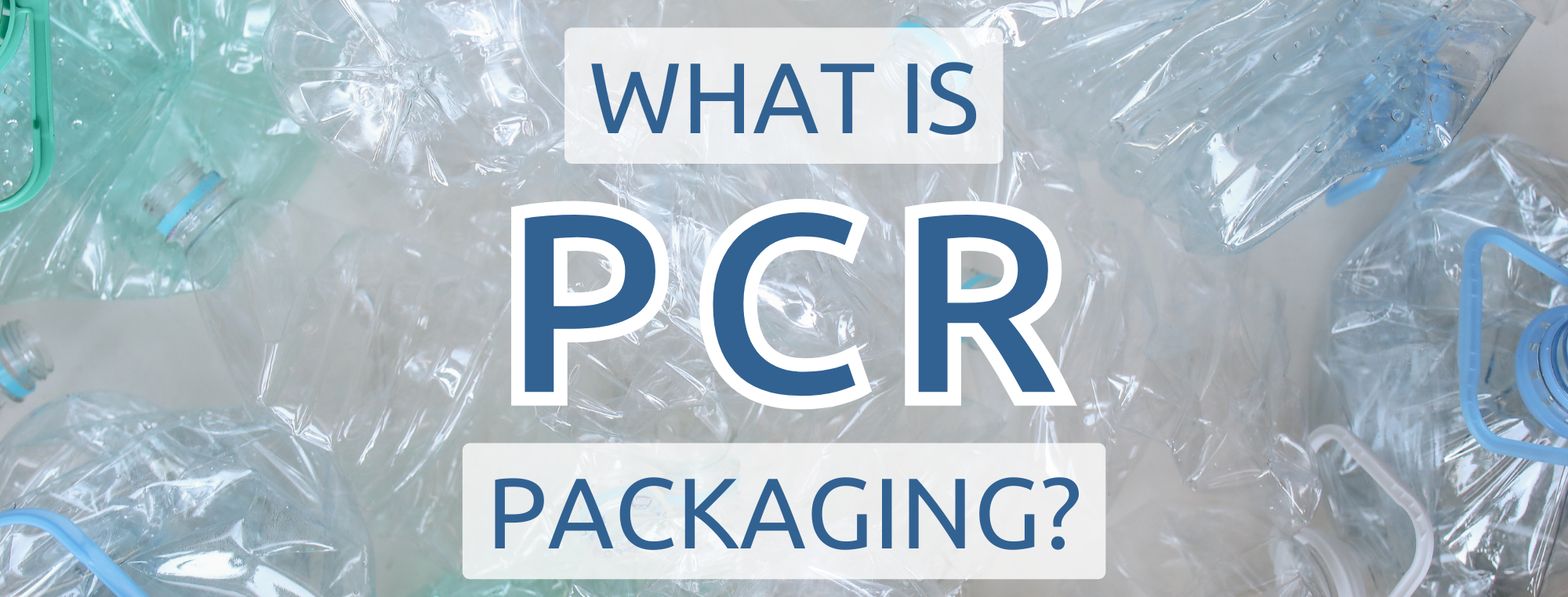What is PCR? Understanding Post-Consumer Resin for Sustainable Packaging


Used packaging doesn’t always get a second chance at life. But for the lucky containers that do, they are recycled into a material called “PCR” and turned into new plastic products. If you’re in the market for recycled packaging, you may be wondering, “What is PCR?” The answer, along with an in-depth look at this fascinating material, is in the article that follows.
What is PCR and Why is it Important?
PCR stands for “Post-Consumer Resin.” Put simply, it’s plastic that has been recycled after being used by consumers. Available in popular varieties like PET, HDPE, and PP, PCR is a favorite for product packaging due to its flexibility and eco-friendly reputation.
In recent years, many brands have embraced PCR packaging to cater to eco-conscious customers and meet stricter sustainability regulations in certain states. As consumer demand for greener solutions continues to grow, PCR is becoming a cornerstone of modern packaging strategies. Beyond its environmental benefits, PCR demonstrates a brand’s commitment to reducing waste and using resources responsibly, qualities that customers notice and appreciate.
The Journey of Post-Consumer Resin: How It’s Made
To create PCR, recyclers start by gathering used plastic items like bottles, bags, and trays. These materials come from a variety of sources, including curbside recycling programs and ocean-bound plastics collected near waterways.
Once collected, the plastics are sorted by type (PET, HDPE, PP), thoroughly cleaned, and processed. Most often, this involves grinding the plastics into flakes, melting them down, and forming them into small resin pellets. These pellets are then distributed to manufacturers who turn them into new containers and packaging.
There’s also a process called chemical recycling, which breaks down plastics into their raw components using chemicals and high heat. While it produces high-quality results, it’s much more expensive and less common than traditional recycling. Regardless of the method, the goal is to produce clean, high-quality resin pellets while filtering out contaminants that could affect the color, strength, or usability of the final product.
Quality and Strength of PCR Packaging
The good news? PCR packaging is just as durable as packaging made from virgin plastics. Whether it’s food-safe or non-food-safe, PCR retains the same strength, flexibility, and reliability as its non-recycled counterparts. This makes it a practical choice for everything from beverage bottles to household containers.
However, PCR does have one visual quirk: containers made from 100% recycled material often have a gray or yellow tint. While this doesn’t affect performance or safety, it’s something to keep in mind if appearance is key to your packaging design. Mixing virgin resin with PCR can reduce this tint, creating a cleaner look while still incorporating recycled materials.
Overcoming Color Challenges in PCR Plastics
Let’s talk color. PCR’s natural gray or yellow tint can be a challenge for brands aiming for a sleek or polished look. Thankfully, there are a few ways to address this:
Mixing Materials: Combining PCR with virgin resin creates a lighter, brighter appearance. For example, a container made with 50% recycled material will appear less tinted than one made from 100% PCR.
Using Dark Colors: Packaging in darker shades like amber, blue, black, or green can hide PCR’s natural tint entirely. Colored PCR often looks indistinguishable from virgin resin, making this an excellent solution for brands focused on aesthetics.
Embracing the Look: Many eco-conscious consumers appreciate the slightly recycled look of 100% PCR containers. It signals sustainability and can be a selling point for products targeting environmentally-conscious buyers. According to NielsenIQ, 66% of global consumers are willing to pay more for sustainable goods, and 73% of millennials are actively seeking out eco-friendly products.
Is PCR Packaging Worth the Cost?
Using PCR in packaging does tend to cost more than virgin resin due to factors like supply and demand, recycling processes, and material availability. However, this higher price point comes with significant benefits:
Brand Appeal: Customers are increasingly willing to pay more for products with sustainable packaging. An additional survey from Accenture confirms this, with 72% of respondents saying they would pay more for products with packaging that is reusable or recyclable.
Regulatory Compliance: States like California are enforcing minimum PCR content requirements, making it a necessity for many brands.
Positive Impact: Choosing PCR helps divert plastics from landfills and waterways, supporting broader environmental goals.
While the upfront cost may be higher, the long-term benefits, like brand loyalty and staying ahead of regulations, often make it a worthwhile investment.
FAQs About PCR
Is PCR safe for food packaging? Yes, when processed correctly, PCR can meet FDA standards for food safety. Always confirm that the material meets your industry’s requirements.
How does PCR compare to virgin resin in cost and durability? While PCR is generally more expensive than virgin resin, it offers comparable strength and reliability, making it an excellent alternative for sustainable packaging.
What industries use PCR packaging the most? Industries like food and beverage, personal care, and household goods are leading the way in adopting PCR packaging.
Ready to Go Recycled?
Want to explore PCR packaging for your brand? Let’s chat. Contact our team to learn more about your options or request samples today.
